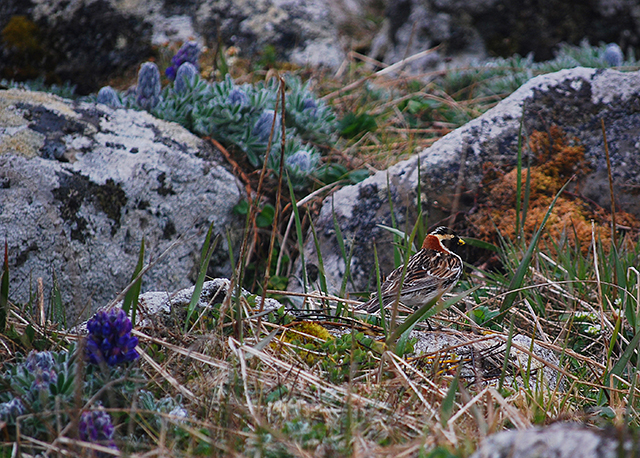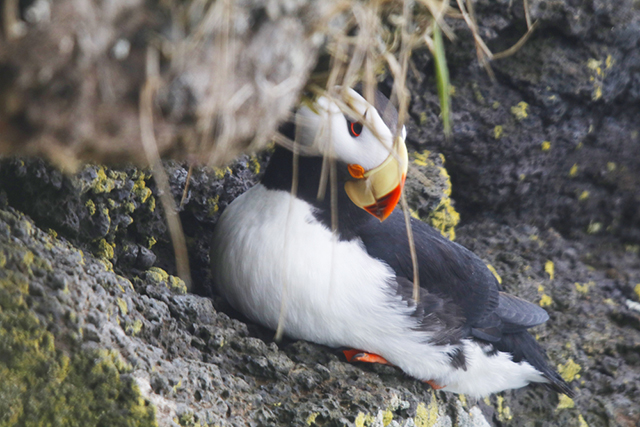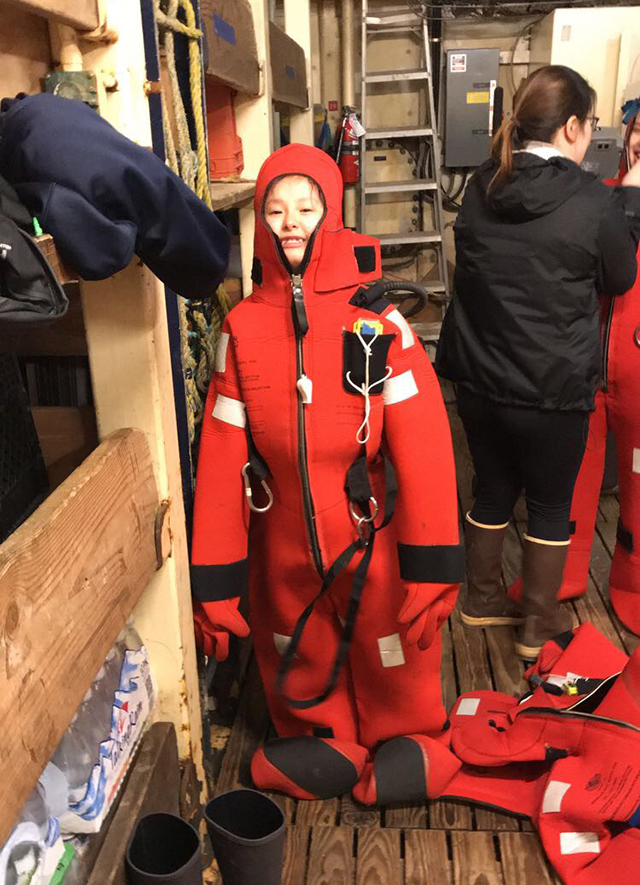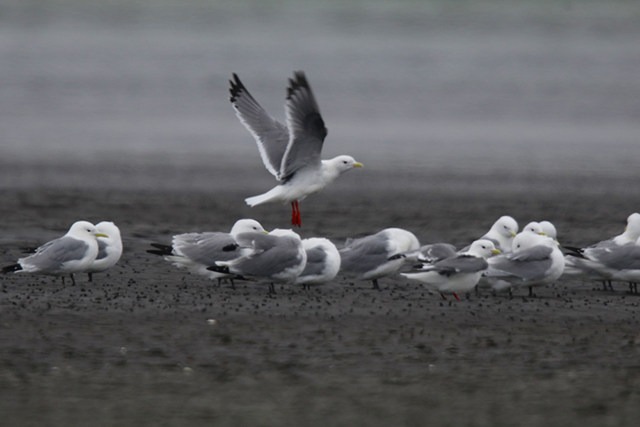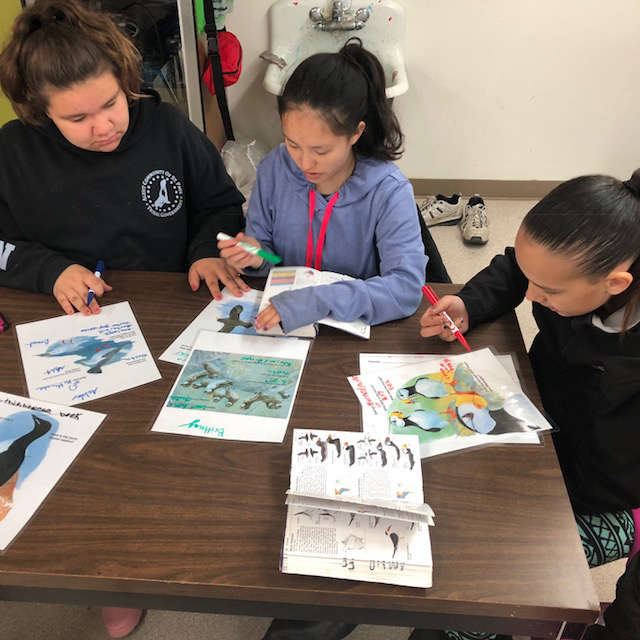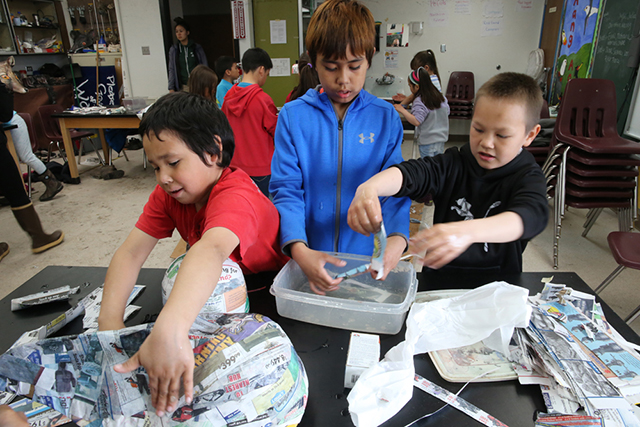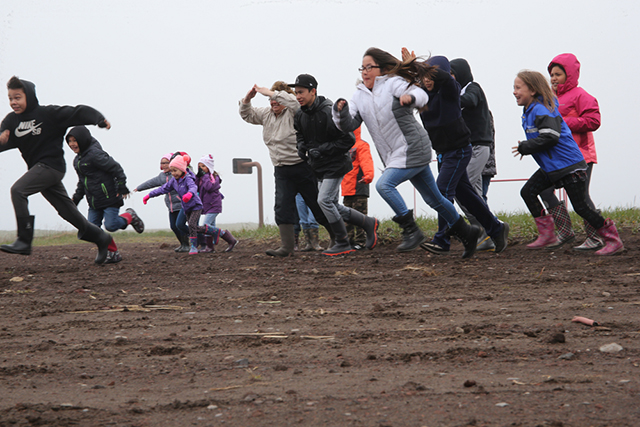After an introduction to the U.S. Fish and Wildlife Service, we played a fun playground game that left everyone with a solid understanding of the different aspects of wildlife habitat protected on National wildlife refuges.
Campers had a chance to visit and do activities on the USFWS’ research vessel R/V Tiglax. Students braved the ‘man lift’ to board the boat and then rotated through various stations. There was plenty of happy squealing as the students were lifted from the dock onto the deck.
All students participated in a scavenger hunt to explore the areas of the boat and meet various crewmembers. Students answered questions at each station to earn feathers that were then assembled into a craft after we returned to school.
Another station was to conduct a plankton tow and then we went to the boat’s wet lab with Dr. Doug Causey from University of Alaska: Anchorage to look at various plankton under the microscope as well as have a mini lesson in identification and importance of plankton in the food chain. We were also able to look at a Least Auklet diet sample taken last summer that showed what plankton those seabirds were feeding on in summer of 2017.
Our older students were able to participate in races to see who could don a survival suit the fastest. Brittney won with a very fast time of 18 seconds!
Back in the classroom, the kids enthusiastically came up with many ideas for study questions and created hypothesis projecting the outcome of each question. We have several experiments related to fox predation that we will start testing tomorrow.
“Feed the Seabird” game featured a lesson in the nutritional value of different prey items to seabirds. Some kids even remembered the importance of fat content to seabird chicks. The beanbag toss feeding game was a fun follow-up to reinforce the ideas that food items have different value to seabirds. The girl’s team ended up winning by two pollack (two points).
Our field guide search activity proved very educational: students learned about the local seabirds while becoming adept at using a field guide.
The younger kids seemed excited to have the author and illustrator of “The Little Fox” read them the story. Afterwards, we worked on auditioning and casting. The only problem is that they all wanted to be the Fox!
The kids really enjoyed the messy, gooey goodness of Paper Mache as we built ships, skiffs, and a variety of seabirds. The clean-up effort afterwards was substantial.
One of our evening sessions entailed putting together nest boxes for Least Auklets. These boxes were precut by Mr. Mac in our school shop, and the students practiced their carpentry skills by assembling the boxes. These boxes will be used along with existing study boxes on St. George Island.
Our other evening session featured bird photography with some pretty advanced equipment Photography has not been great with wild weather and unpredictable, but we did manage to fins some subjects in Salt Lagoon and later at Ridge Wall.
